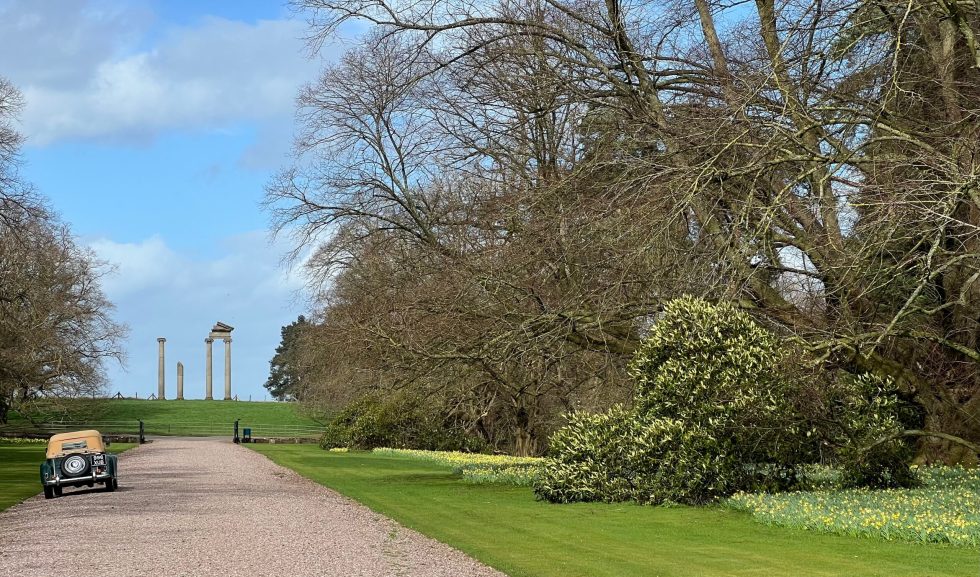In a field close across the road from the principal entrance to Hodnet Hall in Shropshire are what appear to be the remains of a classical temple. Three Ionic columns are intact, two of which support a fragment of pediment, and a fourth pillar is in ruins. But whilst the columns are Georgian in date, this is not the ruin of an 18th century landscape ornament, for the eye-catcher was only erected in the 1960s.
In 1954 Apley Castle, near Wellington in Shropshire, was offered for sale. There were no takers, and as happened so very often in that decade the fabric and fittings were sold at auction and in 1955 work began to pull the house down. Brigadier Algernon George William Heber-Percy (1904-1961) rescued the late 18th century portico and intended to erect it as a feature on his Hodnet estate.

The Brigadier was responsible for laying out the admired gardens around the house from the 1920s, and had incorporated other salvaged architectural features into the design. His mantra was that ‘a garden never stays still – it is forever changing’, and he certainly transformed the estate with a string of lakes set within woodland and formal gardens.

The Brigadier died in 1961 without realising his plan to re-erect the portico, so his family decided to create the eye-catcher in his memory later that decade. A site was chosen in a field across the road from the house, with the folly aligned with the house and drive. Two huge cranes were brought in to lift the stones into place over the course of two weeks, which the Brigadier’s son, Algy Heber-Percy, described as a ‘rather expensive’ exercise. An inscription records that the monument was a project started by the Brigadier but ‘completed in his memory by donations received from his family and friends as a mark of their esteem’ in 1970.

When the revised edition of Barbara Jones’s Follies & Grottoes was published in 1974 the Hodnet folly was one of the newest structures to feature. Jones saw the ‘fine eyecatcher’ in the last months of her research before publication and thought it in the ‘best tradition of follies’.

The memorial folly is easily seen from the Hodnet to Marchamley road, opposite the drive to the house. But if you need help finding it this detail from a tea towel produced by Hodnet Hall in the early 1970s might help…

The gardens at Hodnet Hall open regularly https://www.hodnethallgardens.org and if you are in the area and need refreshments or a comfy bed then the Bear Inn, owned by the estate, is highly recommended https://www.thebearinnhodnet.com
The Folly Flâneuse is always happy to hear from readers – please scroll down to leave a comment. Thank you for reading.






Garance says:
I love your opening image – quite surreal! And who knew a tea towel could be so informative…
Editor says:
Good morning Garance. It’s a dramatic landmark and must have surprised many a driver coming along the road. The tea towel is great fun – very much of its era.
Gwyn Headley says:
And a rare glimpse of La Flâneuse’s chariot, I presume? An MG TF?
Editor says:
Hello Gwyn. Sadly not! Pure luck that an interesting car happened to be parked on the drive. It took ages to get that shot as I had to keep leaping out of the way of cars exiting the gardens.